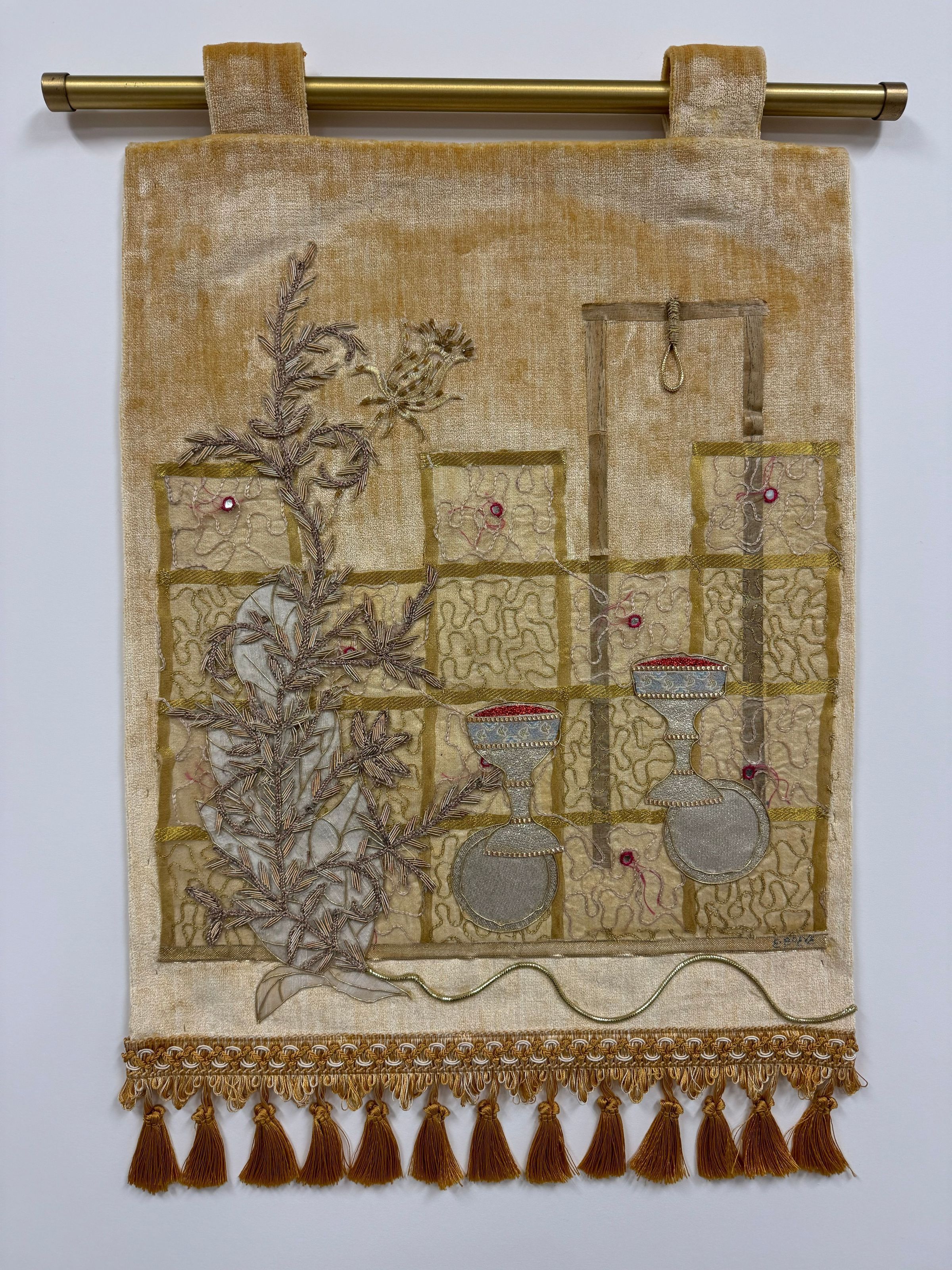Note
Expanded Wall Label:
The Scarlet Thread and The Golden Cord: Thirteen Women of the Hebrew Scriptures
Edgar G. Boevé
The writers of the Hebrew Scriptures give great attention to the women. They were totally involved in the lives of their men and are often the driving force of their lives together. These women were the mothers of the leaders of lsrael, God's chosen people. The scarlet thread defines the place of those women in the royal line of David. Other women were essential to saving the nation of Israel, therefore, the golden cord.
The intent of the thirteen fabric art works is to interpret the essential character of each woman who contributed to the royal line of the preservation of lsrael by texture, color and design through diverse fabrics gathered from around the world.
Esther (Hadassah and Persian for "Star")
Esther was born in Susa, the royal city of the vast empire of Persia. When her parents died, she was a small child and her cousin Mordecai became her guardian. Esther and Mordecai were members of a Jewish community that had been deported from Canaan and been captive from about 600B.C.
When King Ahasuerus (Xerxes) banished his queen, Vashti, he ordered his servants to gather the most beautiful young virgins of the land to his harem. The beautiful Esther was among those prepared over a period of time to be ready to be received by the King. Mordecai warned
her not to reveal her Jewish identity. Esther not only found favor with the King, he made her his Queen.
Meanwhile, Mordecai was instrumental in saving the King from assassination. Haman, the King's Minister, was advanced to such a high rank in the court that by royal decree all people were commanded to bow down to him. However, Mordecai, the Jew, refused to do so based on the premise that one bows to God alone. In revenge, Haman sought to destroy all the Jews throughout the whole kingdom. When Mordecai informed Esther of this edict, she realized this as thread against her as well. She then defied the law which forbade her to approach the King without his bidding. The King was so pleased to see her that he offered to fulfill her request to “even to the half of my kingdom.” Esther invited the King and Haman to dinner. The first dinner was a prelude to a second one held the next night at which time she responded to the King’s offer with the request that she and her people be saved from annihilation. When the King was informed of this horrible plan, he demanded to know the perpetrator. Esther identified the culprit, “This wicked Haman,” the other guests at this royal dinner. Whereupon the King ordered Haman to the gallows he had prepared for Mordecai. The Jews were not only saved but were allowed to destroy all who opposed them throughout the kingdom. Haman and his sons also were hanged on the gallows and their estates were awarded to Esther. Mordecai was elevated to the position next to the King and the days of Purim were established to celebrate the Jews deliverance. Mordecai’s directive to Esther, “Who can say but God has brought you into the palace for such a time as this” (Esther 4:14b) was accomplished.
The Golden cord remained intact
